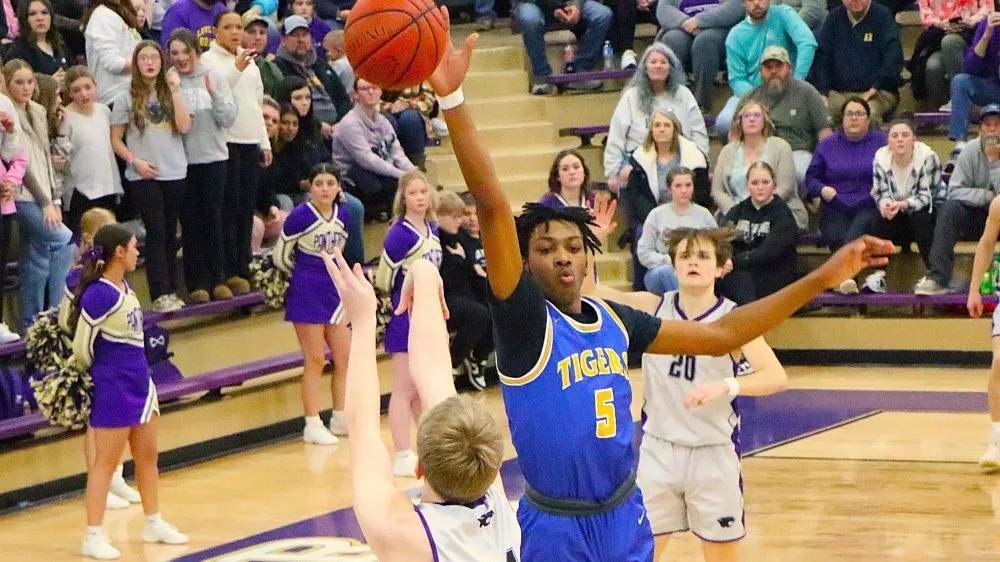
Attorneys Bill Deatherage and Chris Woodall began the defense of their client, accused murderer Landon Stinson, Monday afternoon in Trigg County Circuit Court — opening with testimony from his ex-girlfriend, Taylor Creed.
And, according to her, the 30-year-old woman living and working in Hopkinsville maintained an on-again, off-again relationship with Stinson from age 13 up until 2016.
From there, she told the court she maintained a deep — and sometimes intimate — friendship and relationship with him. One that brought them together on June 30, 2021 — just two days prior to the deaths of Sue Faris and Matthew Blakeley. She related that Blakeley and Stinson were “best friends,” and that Faris was “the person [Stinson] loved most in this world,” and a duo that remained “happy all the time.”
Creed told Deatherage and the jury that Stinson had reached out to her and asked her to talk with him at his Julien Road apartment. She said he was “acting normally,” and nothing “seemed alarming.” She did admit he “snorted something,” a white substance, and that when she asked him to stop, he obliged and nothing came of it.
She was cold, she remembered, and Stinson covered her up in a family blanket from Faris. She was there a few hours, and could recollect him talking about “wanting to leave” Trigg and Christian counties and go elsewhere.
In cross examination, however, Commonwealth’s Attorney Carrie Ovey-Wiggins pried a little further.
Asked how often she’d see Stinson between 2016 and 2021, Creed said it was a “few times a year,” and that prior to the June 30-July 2, 2021, window, she’d last visited with him in January 2021. She’d gotten a new phone number, and Stinson hadn’t contacted her in “some time.”
Creed repeatedly stated she “didn’t want to speculate” or “recall.”
Creed also testified that on January 2, 2023, she was visited by Kentucky State Police Det. David Dick, in regard to an ongoing investigation. Talking with him on her front porch, she said Det. Dick felt “pushy, intimidating” and she felt like he was trying to “sway her opinion” on Stinson.
But she also testified to Ovey-Wiggins that she answered the questions willingly, and without coercion.
Dr. LaDonna Jones, serologist for the Kentucky State Police forensics lab in Madisonville, also took the stand on behalf of the defense — noting a set Stinson’s clothes did not test positively for blood. Judge Natalie White answered a juror’s question about this, too, stating further proof from the defense would reveal from where these clothes were taken.
Court recessed around 3 PM, and is expected to resume at 9 AM Tuesday.
At the beginning of Monday’s afternoon session, Dr. Lauren Lippincott, a forensic pathology specialist, served as expert witness to the autopsies of Blakeley and Faris.
Blakeley, she said, died of three gunshot wounds. One in the left chest, with the bullet going left to right and front to back, and slightly downward. One in the nose, going left to right and downward. And one in the left side of the face, going front to back. She noted the lack of soot and stippling made it difficult to determine the range of the shooter.
Per a toxicology report, he also had cannabinoids in his system at the time of death.
Faris, she added, died of one gunshot wound. No exit point was located, but its entry was located near the top of the victim’s crown — with the bullet located inside the body by X-ray in a downward, left-to-right path. Again, no soot or stippling was discovered.
Dr. Lippincott also entered into the record that, after a shot, soot can be found up to six inches away from the barrel, and stippling can be located on surfaces of up to two feet. Neither material was discovered in the residence.
Both deaths were ruled homicides, and the Commonwealth rested its proof at 2:01 PM. And as the jury and defense panel reviewed photos of the deceased, Stinson refused to look.
Many, many questions remain in the balance for both sides of the case — with Friday’s final window quickly approaching.
No data found.




